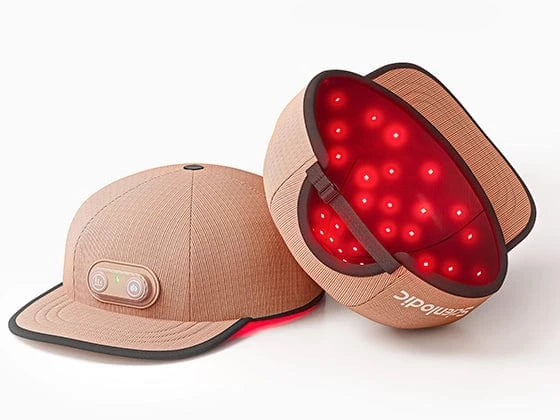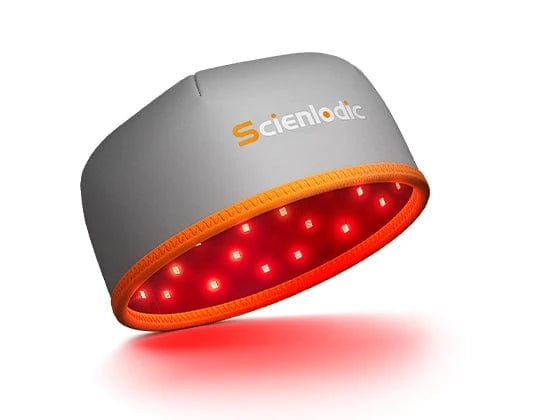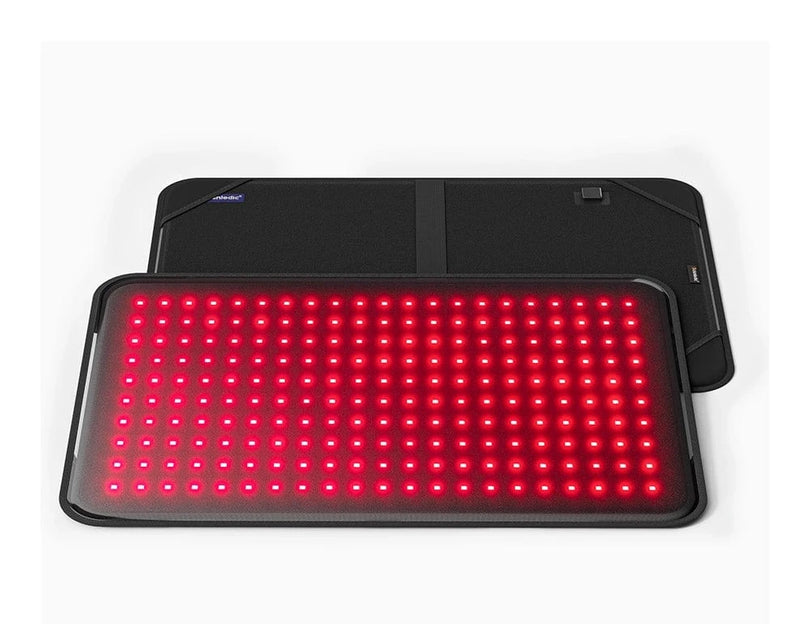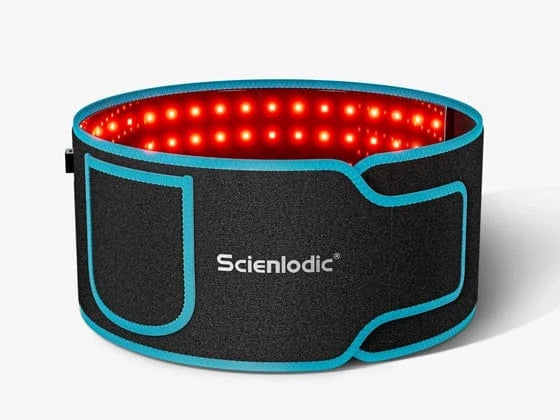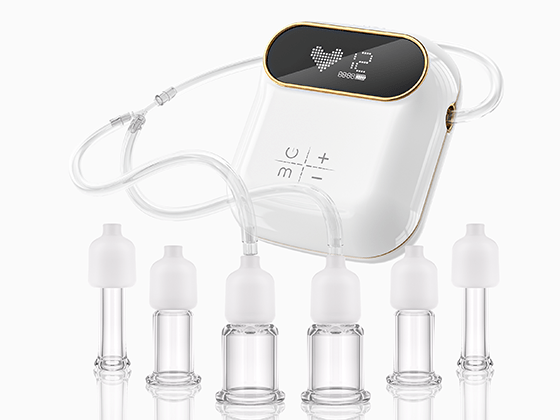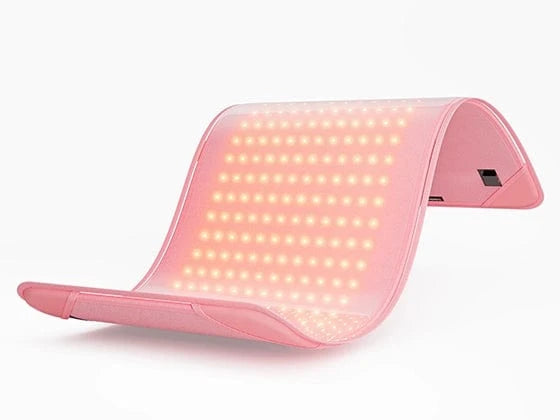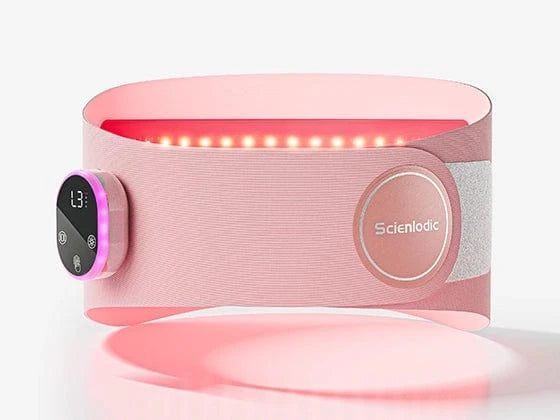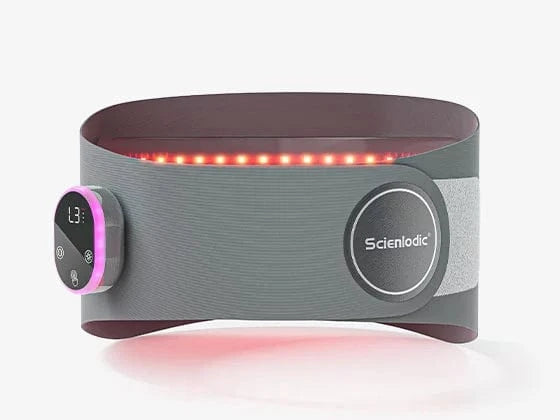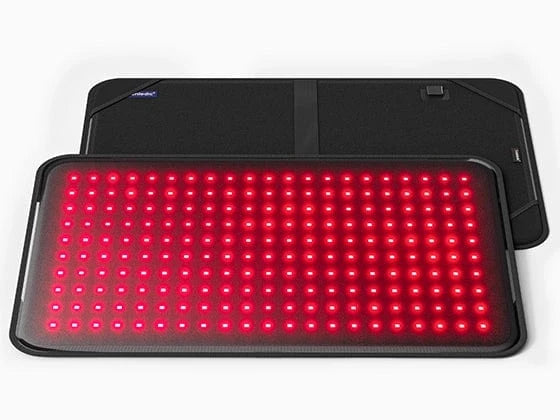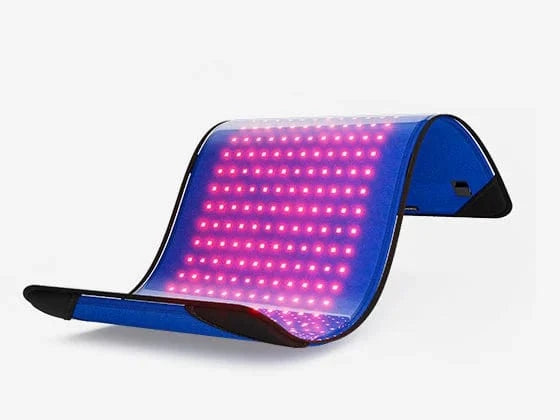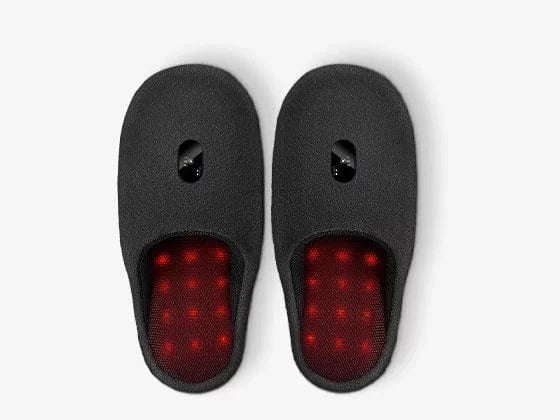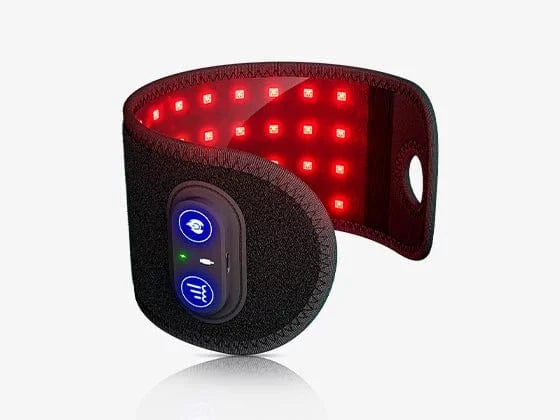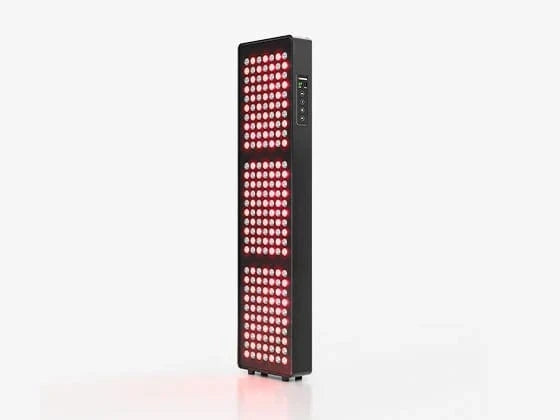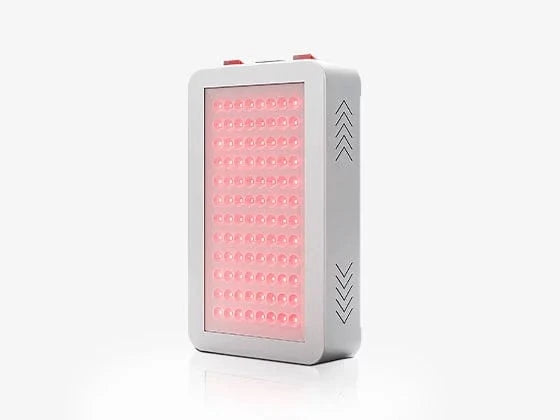If you've been suffering from chronic pain for a long time, you're probably no longer unfamiliar with common pain relief solutions. Medication may lead to quick pain relief, but they are usually addictive and have serious side effects, including bringing stomach problems and resistance reduced due to the abuse of drugs. Surgery may be effective, but it is expensive and painful, and there is no guarantee of a cure for chronic pain.
Now you have a new option, red light therapy. Or maybe you've heard of red light therapy, but still have questions about whether it's right for you. After reading this article, I believe you will have the answer.
How does red light therapy work for pain?
Red light therapy uses low levels of red and infrared wavelengths of light that penetrate deep into the skin and tissues to trigger biochemical changes within cells. These changes theoretically stimulate the production of adenosine triphosphate (ATP), which speeds up the metabolism of cells, thereby reducing or healing pain. "Irradiating tissue with light causes an increase in mitochondrial products such as ATP, NADH, proteins, and RNA." [1] ATP (adenosine triphosphate) provides cellular energy and combats oxidative stress. Nitric oxide is also released, which plays an important role in phototherapy pain relief. The photobiochemical reaction of this cell is similar to photosynthesis in plants - sunlight is absorbed by the plant and then converted into usable energy that enables the plant to grow.
Decades-long research on red light therapy has shown positive results. According to more than 4000 studies on pub.med.gov, most laboratory and clinical studies have shown that red light therapy has a positive effect on acute and chronic musculoskeletal pain. Based on this, Scienlodic provides FDA-approved red light therapy devices for pain to treat a range of diseases.
Lights with wavelengths in the red and near-infrared regions of the spectrum (600nm-905nm) are usually employed when using red light therapy for pain relief because of their ability to penetrate skin, soft/hard tissues, and in clinical trials proven to have great effects on pain, inflammation and tissue repair.
The wavelength of red light commonly used in red light devices on the market is 660 nm, which can be easily absorbed by surface tissues and cells. The commonly used infrared wavelength is 850nm, which can penetrate deeper into muscles and tissues than red light. Some devices deliver infrared light with a wavelength of 950nm, which is more penetrating and can penetrate 8cm into the subcutaneous tissue. But only red light can be seen by the naked eye, infrared is invisible to human eyes.

Red light therapy is also known as low-level laser therapy because of the lower energy or power density used compared to other forms of laser therapy, such as ablation, cutting, and thermal coagulation of tissue [2]. Lasers are used as a traditional pain management method, and any traditional laser device is not recommended for use at home due to its high power. But red light is a low-level laser, so you don’t need a doctor’s license when you use the red light therapy device at home. Even if you use a highest intensity red light therapy device at home, this low level laser will not cause any bad effects to you.
You may also hear it called non-thermal LED light (light emitting diode), according to the Cleveland Clinic. Red light therapy devices uses LED bulbs. These LEDs emit the red and infrared light. LED phototherapy presents as a safe therapy compared to other thermal based dermatological therapies.
What types of pain can RLT treat?
When treating acute pain with red light, it is particularly effective to use red light as soon as possible after injury (assuming there is no active bleeding). The faster the inflammation is reduced, the better the healing outcome. In the case of acute injury, red light therapy helps to restore the body to normal function more quickly.
For chronic pain, red light therapy is most often used to help against persistent pain and inflammation.
Pain-related conditions that red light therapy may be helpful for include:
- Back pain
- Knee pain
- Neck pain
- Achilles tendonitis
- Bone recovery pain (from fracture)
- Diabetic foot ulcers and foot neuropathy
- Joint and neck pain
- Muscle pain
- Osteoarthritis
- Psoriasis
- Rheumatoid Arthritis
- Wounds and burns
How to use red light therapy for pain?
Usually most people can get red light therapy at a pain management center, which makes a single session expensive, and most pain relief is can not be achieved for a few days. According to surveys, red light therapy can cost $25-200 or more per session. Prices depend on the location of the service and the specific procedure. Treatment is needed about every three weeks and may last for several months.
Most medical insurance currently does not cover red light therapy.
However, home red light devices range in price from $149 to thousands of dollars. So using red light at home for pain relief is now becoming a trend.
If you're looking for an FDA-approved red light therapy device for pain, but are having a hard time choosing the right one for you, here's some scientific and helpful advice.
When choosing red light therapy device, there are several factors that we need to consider:
- Irradiance. The power output or irradiance is the actual amount of light emitted from the device. This is the key figure we are looking for with red light therapy devices. It's more important than the wattage draw or the wattage rating of the LEDs. The more power the less time you need to spend in front of your red light device. Of course, the distance that we are away from the device should be take into consideration when talking about the irradiance.
- Budget or price. A handheld device cost you about $100 while a panel cost over $1000. However, if you only want to get something cheap, you might have problems when using the device.
- Targeted treatment or a full body treatment. Many people want to get red light therapy for specific problems such as hand pain or neck pain. In this case, a handheld device or a wearable device might be what you need. But if you suffer from whole body pain, then a panel might be more suited.
- Convenience. Is it easy to use, install or move?
- Safety. EMF exposure.
FDA-approved Red Light Therapy Devices for Pain
Large Panel
- Irradiance: ★★★★★
- Budget or price: ★★★☆☆
- Targeted: ★★☆☆☆
- Convenient: ★★★★☆
- Safety: ★★★★★
Large panels are considered to have high-power irradiance. With high density, here comes a high price. You are not just paying for a bigger device here. You are also paying for better quality and effect. Panels often use an even more strict irradiance and EMF standard, ensuring it is effective and safe enough.
Large-area exposure is definitely a guarantee of efficiency. You can use panels to take care of more body parts in each treatment. Moreover, it not only saves you time but also enables you to try more health treatments (e.g., wound healing, skin care, etc.) since you have fewer limitations than traditional targeted products.
Surely, its huge volume brings a problem with the installation. You might indeed need the assistance of another person to install the panel. But once you install it, you can use this anytime you want. You don’t need other actions unless you move to a new place.
Plus, with the new power stand, rack, and door/wall-mounted kit, it is easier to fix or even move this than before. All these efforts will be worth it once you see the great full-body results yourself.
Panels are like a combination of all the targeted devices. So if you are looking for an overall solution to different health problems, the full-body panel will be a perfect choice.
Wearable device
Handheld Red Light Therapy Devices
- Irradiance: ★★★★☆
- Budget or price: ★★★★☆
- Targeted: ★★★★☆
- Convenient: ★★★☆☆
- Safety: ★★★★★
Handheld devices are popular among some people because of their small size and the ability to easily irradiate any painful part of the body. But most handheld devices on the market generally work at a low power. Typically these popular handheld devices have only 3-5 LEDs, and ususally work at a low power which is less than 3W, and the irradiance produced under this power is often negligible compared to the irradiance required for pain relief. In order to achieve the therapeutic effect, you may need to prolong the use time. If you use these handheld devices for as long as you actually need them, you may experience new pain, chronic soreness in your hand holding the handheld device.

But is there a solution? Based on the existing red light handheld devices on the market, we have developed multi-LED and high-power handheld devices. This greatly increases the red light irradiance per unit area, and in simple terms, you can receive treatment in less time. At the same time, it is designed to have the feature of pulse, which greatly improves the treatment efficiency.
Click the link below to know more about our new red light handheld device developed to protect the environment and improve treatment efficiency.
Photon Therapy Torch
Wearable Red Light Therapy Devices
- Irradiance: ★★★☆☆
- Budget or price: ★★★★☆
- Targeted: ★★★★★
- Convenient: ★★★★★
- Safety: ★★★★★
You might be hesitant, maybe there is a better solution for pain relief? Yes, you may need an effective red light device that is lighter, completely hands-free, but can also treat specific pain areas. In response to these needs, we have developed a series of wearable pain relief devices. They are lightweight and portable, can be worn close to the skin, and deliver treatment results quickly and efficiently.
Wearable red light therapy device for back pain and joint pain
For back pain and knee pain, etc., red light therapy pads/ wraps or belts (large, medium and small sizes) can be easily worn due to their skin-friendly material and lighter weight. Wearing these devices close to the skin can easily maximize the effect of pain relief therapy because it avoids the divergence and attenuation of red and infrared light.
Wearable red light devices can be used concurrently with other pain relief regimens. For example, when wearing a red light device, because it does not restrict your movement, you can synchronize pain relief with other exercise relief programs. Another example is the increased EMS function. When you are using red light to treat pain, it can help you relax your muscles and achieve double the pain relief effect.
Photon Therapy Lipo Wrap (Large): https://scienlodic.com/products/red-light-therapy-pad
Photon Therapy Belt (Medium): https://scienlodic.com/products/photon-therapy-wrap
Photon Therapy Pad (Small): https://scienlodic.com/products/photon-therapy-wrap
Unlike traditional heating pads that relieve hand pain, these hand wearable devices use a combination of infrared and red light to activate cells deep in the bone through infrared to provide vitality for the cells, allowing the muscles to heat up from the inside out, and leads to deep treatment without damaging your skin due to excessive heat transfer.
Wearable red light therapy device for wrist, hand pain relief
Unlike traditional heating pads that relieve hand pain, these hand wearable devices use a combination of infrared and red light to activate cells deep in the bone through infrared to provide vitality for the cells, allowing the muscles to heat up from the inside out, and leads to deep treatment without damaging your skin due to excessive heat transfer.
Photon Therapy Wrist Wraps Pad: https://scienlodic.com/products/photon-therapy-wrist-wraps-pad
Additional Resources:
[1] Chung, Hoon, et al. The Nuts and Bolts of Low-level Laser (Light) Therapy. Ann Biomed Eng. 2012 February; 40(2): 516–533. doi:10.1007/s10439-011-0454-7, p. 5 of NIH Public.
Access version: https://www.ncbi.nlm.nih.gov/pmc/articles/PMC3288797/
[2] Barolet D. Light-emitting diodes (LEDs) in dermatology. Semin Cutan Med Surg. 2008 Dec;27(4):227–238. [PubMed] [Google Scholar]

